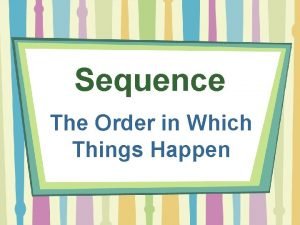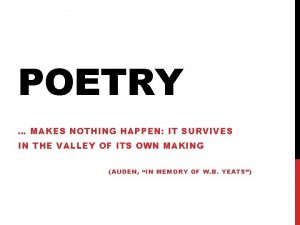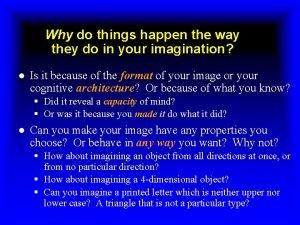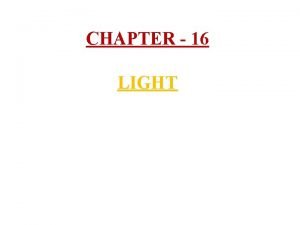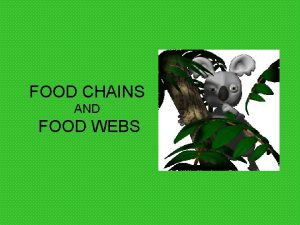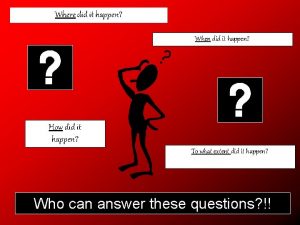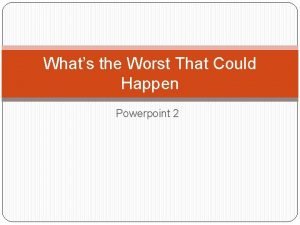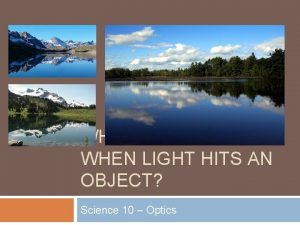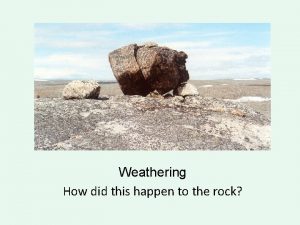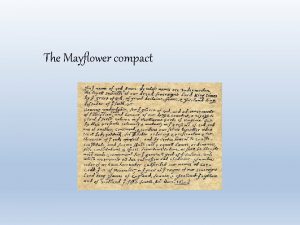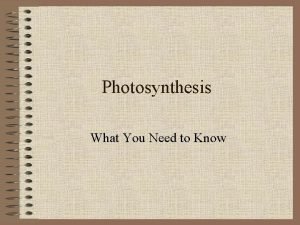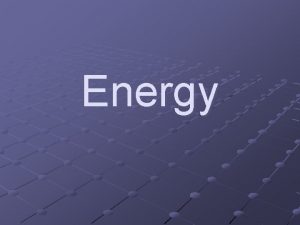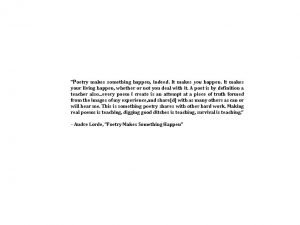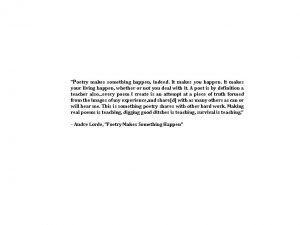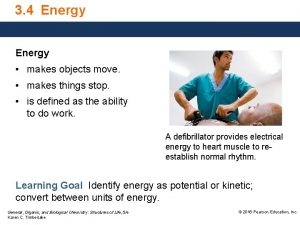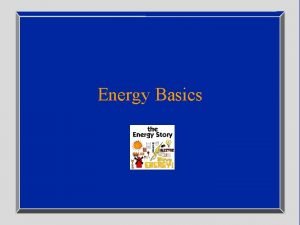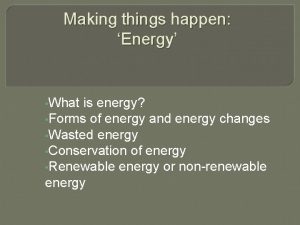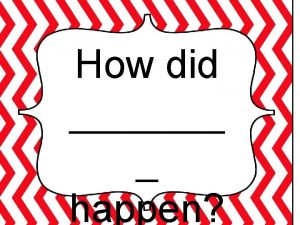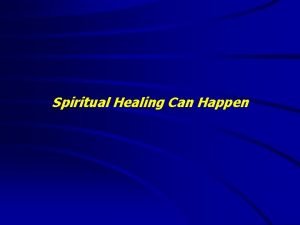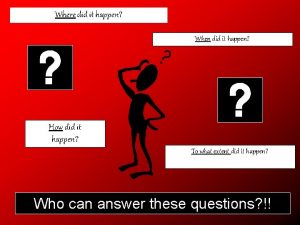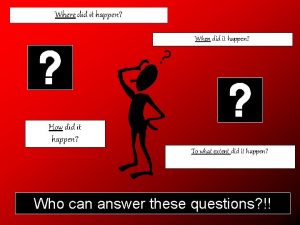What is Energy What makes things happen Energy
















- Slides: 16


What is Energy? • “ What makes things happen”. • Energy is all around us, but can be hard to identify. e. g. :

Types of Energy

Forms of Energy

1. How many different types of energy can you see? List them in your Notebook.

• Speedo-rotation activity • Energy worksheet 1 and 2

What is potential Energy? • An object can store energy as the result of its position. • This stored energy of position is referred to as potential energy. https: //www. youtube. com/watch? v=Iq. V 5 L 66 EP 2 E - Energy (4 minutes and 40 seconds) Potential Energy handout Potential and Kinetic

Transferring and Transforming Energy • Energy transfer, happens from one object to another without changing its form. e. g. : Cricket bat to ball https: //www. youtube. com/watch? v=h 90 xiza. RTOg – 1 minute and 30 seconds

• Energy transforming is energy changes from one form to another. e. g. : https: //www. youtube. com/watch? v=ftj 23 FRS 2 LI -How do energy convert? ( 2 minutes and 41 seconds)

Table 01 : Transformation Energy https: //www. youtube. com/watch? v=Jnj 8 mc 04 r 9 E - Potential Energy: Wile E Coyote & Roadrunner (1 minute and 22 seconds)

Heat conduction Heat Solid Object Temperature increases Particles vibrate faster and bump into each other Vibration are passed from particle to particle along the object (e. g. : Metals) • Poor conductors of heat –insulators e. g. : Glass, wood, rubber

Heat Convection Heat liquid or gas Particles starts to move around - heat passes air e. g. : Boiling water, radiator, steaming cup of hot tea, hot balloon

Radiation • Energy transfer without involving particle movements. e. g. : Heat from the sun : Not enough particles in space to transfer heat https: //www. youtube. com/watch? v=FJTD-Gpt. XU 4 - Eureka: conduction, convection, radiation : 6 minuts and 23 seconds

Conduction States of Matter How heat travel? Examples Convection Radiation

Radiant heat - Transmission, absorption and reflection • Heat that travels by radiation is called radiant heat. • Radiant heat is similar to light (transmit, absorb and reflection). • When radiant heat strikes a surface, it can be reflected, transmitted or absorbed.

Transmitted radiant heat Definition Radiant heat to pass through an object. Temperature increase Not increase quickly. Examples Glass Absorbed radiant heat Reflected radiant heat Dark-coloured objects Shiny or light-coloured tend to absorb light and surfaces tend to reflect radiant heat. light and radiant heat away. Quickly Not change quickly when heat reaches them by radiation. Dark coloured objects Shiny objects
 The order in which things happen
The order in which things happen Poetry makes nothing happen poem
Poetry makes nothing happen poem Why do things happen the way they do
Why do things happen the way they do Chapter 16 light
Chapter 16 light Living and nonliving things venn diagram
Living and nonliving things venn diagram Life processes of living things
Life processes of living things Food chain begins with
Food chain begins with Energy energy transfer and general energy analysis
Energy energy transfer and general energy analysis Energy energy transfer and general energy analysis
Energy energy transfer and general energy analysis Where did it happen?
Where did it happen? What's the worst that could happen short story questions
What's the worst that could happen short story questions What happens when light hits an object
What happens when light hits an object Which type of weathering
Which type of weathering Mayflower101
Mayflower101 What is haymitch's training strategy for katniss and peeta
What is haymitch's training strategy for katniss and peeta Now present tense
Now present tense Where does photosynthesis take place?
Where does photosynthesis take place?
